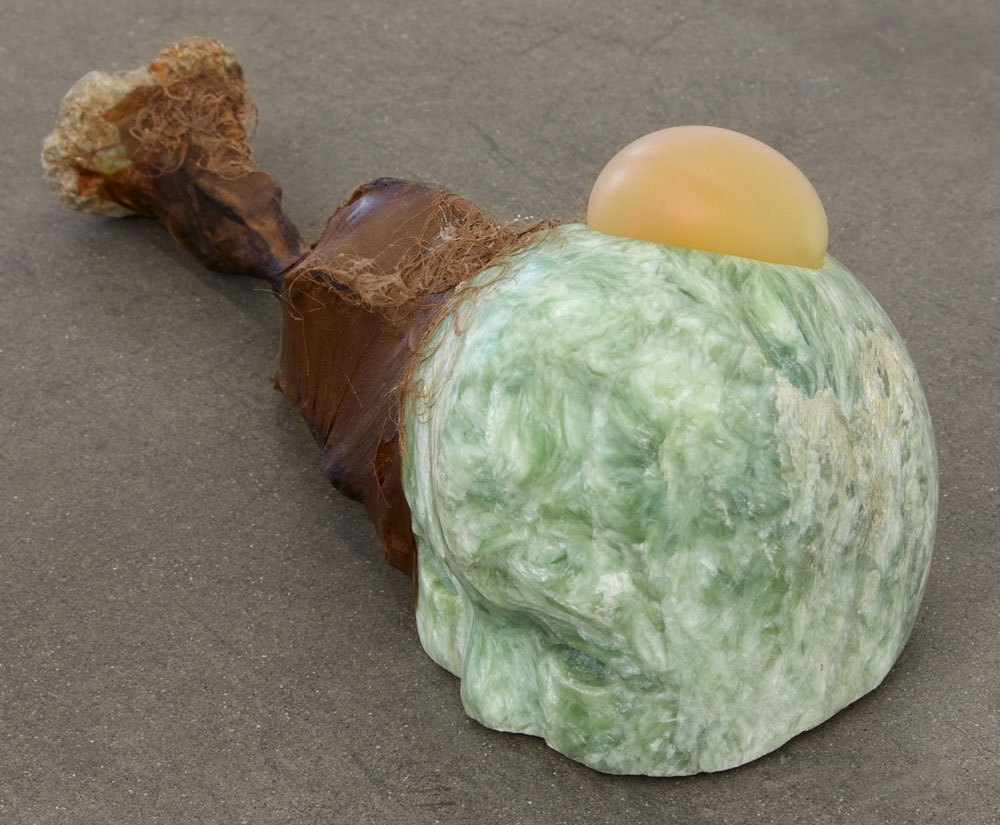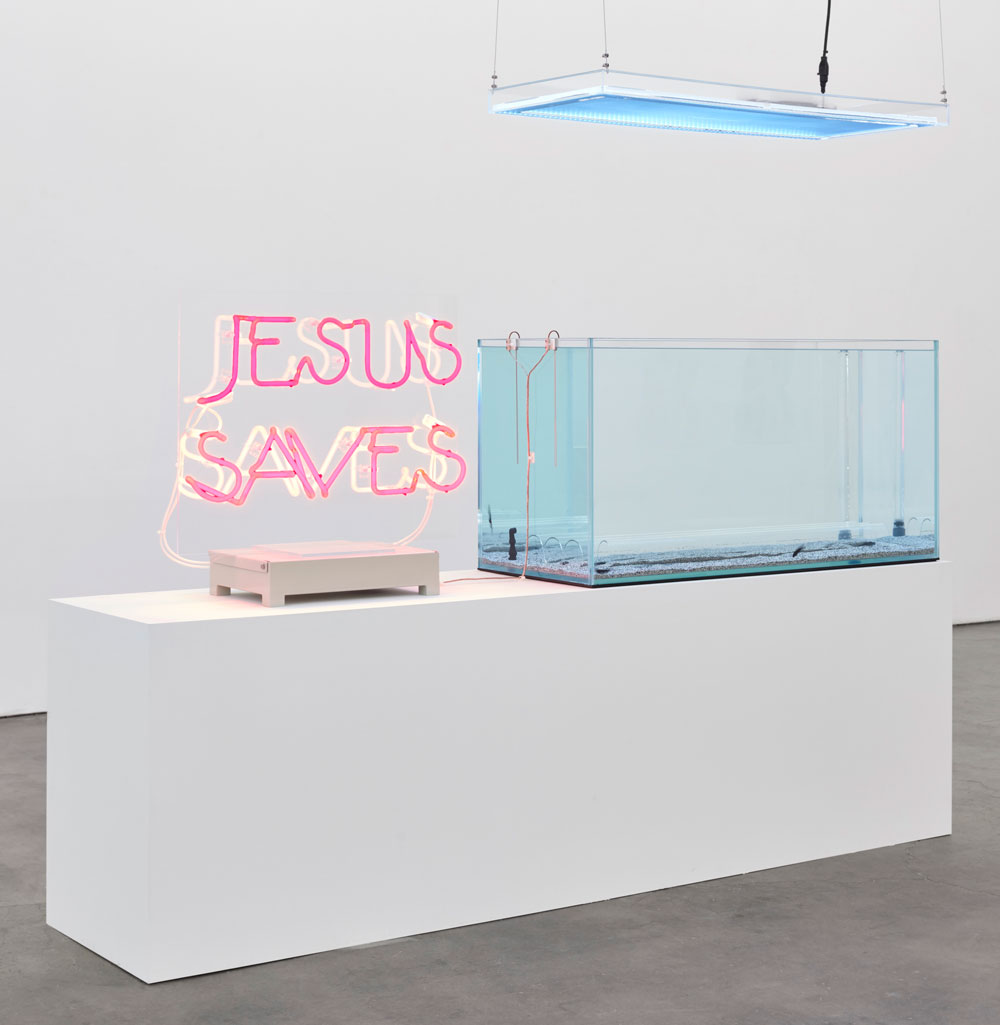“Materia Medica,” the summer group show at François Ghebaly, curated by Kelly Akashi, is more than a call to reconsider the relationship between humans and the natural world. The show pointedly issues a rallying cry of refusal against relentlessly destructive human systems that are connected with histories of colonial exploitation. A short introductory text—a mash-up of science fiction and manifesto—juxtaposes observations of human activity, as seen on an evolutionary scale, with a series of artistic intentions, such as, “To work from one’s own history… To record nature’s subjugation to human needs. To foretell the co-opting of all life in service to structures of power.”
The exhibition title references an early pharmacological text and millennia of botanical and medicinal knowledge—even as it exposes such knowledge as centered in human subjugation of all life. De Materia Medica, a definitive pharmacopeia by the 1st century physician Dioscorides that sought to classify plant, mineral and animal substances according to their medicinal effects, sits in the interval between traditional knowledge of the natural world and the scientific exploitation of nature.
But in the midst of our post-apocalyptic landscape, Materia Medica posits empathy and organic relations with the natural world. A number of works are allegorical—for example, Kay Hofmann’s hand-carved alabaster sculptures, featuring female figures entwined with organic forms. These reflect an idealized oneness with the natural world.

Catalina Ouyang, font III, 2020, courtesy of the artist, Make Room, Los Angeles, and François Ghebaly, photo by Paul Salveson.
Several mixed-media works examine histories of colonization. Catalina Ouyang’s wronging wrongs (2019), shown previously in “fish mystery in the shift horizon” at Rubber Factory in New York, is part of her work on the parallels of species extinction and the transmission of knowledge in diaspora. In font III (2020), in which a raw egg sits in a carved soapstone sculpture resembling a head, and is bathed in vinegar each day while its shell dissolves, Ouyang addresses identity and whiteness.
Candice Lin’s Minoritarian Medicine (2020), a homemade apothecary fortified with various tinctures infused with substances like Astragalus, Echinacea, Reishi Mushroom, and Oxymel (for immune support), and hand sanitizer, alludes to both medicinals based in intimate knowledge of plants and passed on through generations, and to our current pandemic. It is one of the show’s ironies that medicine is needed in the pandemic, and that pandemic periodically disrupts humans’ self-appointed hegemony.
The dichotomous relationship between nature and culture is addressed most explicitly in works by Jessie Homer French and Max Hooper Schneider. Pastoral (1992), an oil painting by Homer French, depicts cows grazing in the shadow of nuclear cooling towers, which presumably fuel the electrical lines stretching above the pasture. Pastoral plays off Hooper Schneider’s installation of a flickering “Jesus Saves” neon sign powered by an aquarium of Black Ghost Knifefish (DIALECTRIX: DIVISION APTERONOTUS (JESUS SAVES), 2020). Electrical signals from the Knifefish are transmitted through copper embedded in the tank, thus illuminating “Jesus Saves.”
Akashi’s text concludes in a resolution: “To become one with nature, to bind with it, to emote from within it;” yet it dispassionately observes that proposals “for empathy, for defense, for action” remained unanswered. And so it dispenses with simple solutions and technological saves and leaves us to answer the difficult question of how to become one with nature.



















0 Comments